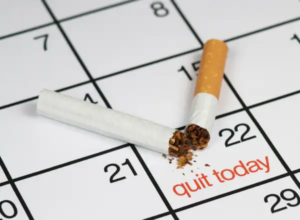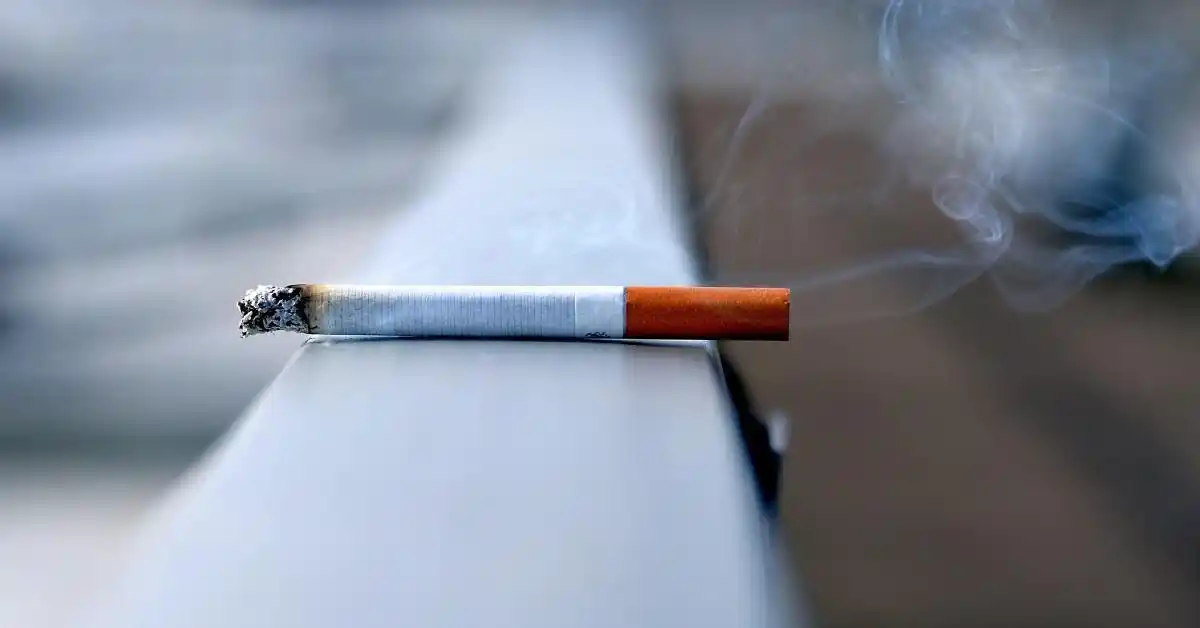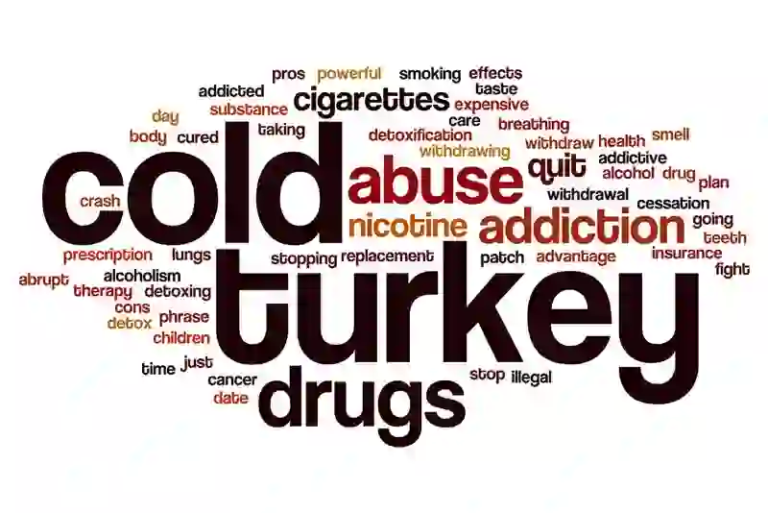 Quitting smoking is not a one-day decision or a quick fix it’s a journey that unfolds differently for every person. The process can be difficult, uncomfortable, and even frustrating at times. But understanding what happens in your body minute by minute, day by day, and week by week — can give you clarity and motivation to stay on track. This article will explore the full timeline of smoking cessation, how it affects your lungs, heart, blood, and mental health, and how long it really takes to quit smoking for good.
Quitting smoking is not a one-day decision or a quick fix it’s a journey that unfolds differently for every person. The process can be difficult, uncomfortable, and even frustrating at times. But understanding what happens in your body minute by minute, day by day, and week by week — can give you clarity and motivation to stay on track. This article will explore the full timeline of smoking cessation, how it affects your lungs, heart, blood, and mental health, and how long it really takes to quit smoking for good.
Whether you’re trying to stop smoking yourself, or helping someone else on the path to recovery, knowing the symptoms, triggers, benefits, and risks along the way can make all the difference. From the first day without a cigarette to the return of full lung function months or years later, this guide outlines what to expect, and how to overcome the physical and mental hurdles.
The First Minutes: What Happens Right After You Quit Smoking
As soon as you stop smoking, your body starts to heal. Within just 20 minutes, your heart rate and blood pressure begin to drop. The body no longer has to deal with the immediate effects of nicotine and carbon monoxide from the cigarette.
By the end of the first 8 hours, carbon monoxide levels in the blood decrease, and oxygen levels begin to normalize. For many people, this is the first time their cells get clean, oxygen-rich blood after years of exposure to tobacco smoke.
Within the First 24 Hours: Cravings and Physical Withdrawal Symptoms Begin
Nicotine withdrawal symptoms begin quickly. Within 24 hours, you might feel intense cravings, irritability, anxiety, or even headaches. These symptoms are signs that your body is adjusting to the absence of nicotine.
Nicotine affects the brain’s reward system, and its sudden removal creates both physical symptoms and psychological discomfort. You may also feel restlessness, mood swings, or a drop in energy levels. This is completely normal and part of the healing process.
Many people don’t realize that nicotine withdrawal symptoms peak around the first 72 hours meaning the first few days are the hardest. If you can get through the first week, you are already on the road to recovery.
First Few Days: Detoxification Begins
As you approach the second and third day without smoking, your body is clearing nicotine from your system. Your sense of taste and smell may start to improve. You might notice food tastes better, and you can smell things more clearly. However, many people also experience increased coughing or mucus production.
This is because your lungs are beginning to clear out the accumulated mucus and tar. The bronchial tubes begin to relax, and cilia the tiny hair-like structures in your lungs that sweep out toxins start functioning better.
First Week: Breaking the Habit Loop
The first week is often considered the toughest. Your brain is still expecting the daily dose of nicotine, and your body is reacting to its absence. Cravings may come in waves and can be triggered by stress, habits (like coffee or alcohol), or even certain people.
This is where a solid quit plan becomes essential. You might benefit from tools like nicotine replacement therapy (NRTs), nicotine patches, or support from a healthcare provider. Behavioral strategies like distraction, deep breathing, and hydration can ease physiological sensations like anxiety and tension.
The First Month: Coughing, Mucus, and Respiratory Recovery
 During the first few weeks, your body begins to stabilize. Coughing may actually increase, but this is a sign of healing. Your lungs are pushing out toxins, and your mucus clearance is improving.
During the first few weeks, your body begins to stabilize. Coughing may actually increase, but this is a sign of healing. Your lungs are pushing out toxins, and your mucus clearance is improving.
Your lung function improves measurably by the end of the first month. You may notice increased energy levels, better breathing, and improved circulation. You might still face triggers or cravings, but their intensity decreases with time.
Many people also experience mental changes — both good and bad. Your mental state may fluctuate. Some feel empowered, while others struggle with anxiety, sadness, or sleep problems. This is all part of the brain's rebalancing without nicotine.
One to Three Months: Stronger Lungs, Lower Risk
After a few months, your lung function continues to improve. Bronchial tubes begin to heal, making it easier to breathe, especially during physical activity. For many people, exercise feels less exhausting and more enjoyable.
Your risk of heart attack begins to decrease. Blood pressure becomes more stable, and your circulation improves. You may notice your skin looks healthier, and even your immune system works better.
While cravings might still appear occasionally, they are less intense. Psychological triggers such as stress or boredom might remain, but they become easier to manage with time and awareness.
3 to 9 Months: Major Lung Recovery
Between three and nine months, you’ll see major progress in lung recovery. Coughing, wheezing, and shortness of breath continue to decline. The cilia in your lungs regenerate and are now able to sweep out mucus and debris more effectively.
Many people feel like their lungs are “younger.” The risk of respiratory illnesses like bronchitis or pneumonia also drops significantly. Those suffering from chronic obstructive pulmonary disease (COPD) may experience fewer flare-ups and better breathing.
Sleep, stamina, and energy levels continue to improve and the physical addiction to nicotine is often gone by this point, although mental triggers can still arise occasionally.
One Year: Risk of Heart Disease Drops
At the one-year mark, your risk of coronary heart disease is cut in half compared to someone who still smokes. Your heart rate and blood vessels function more efficiently, and your overall cardiovascular health is stronger.
You’ve officially completed one of the hardest journeys in public health: quitting a highly addictive substance. You may still benefit from support groups, counseling, or check-ins with your healthcare provider, especially if you’re working on weight gain, stress, or other side effects.If you want to read more about post-quitting challenges, see our in-depth article on the side effects of quitting smoking.
Long-Term Recovery: Five to Ten Years
After five years of not smoking, your risk of stroke is the same as a non-smoker’s. Your oxygen levels are fully stable, and the airways are generally clear. The risk of developing cervical cancer, lung cancer, or oral cancers continues to decline.
At ten years, your risk of dying from lung cancer is cut in half. The risk of developing other smoking-related diseases such as chronic lung diseases, pulmonary disease, or heart disease is also significantly lower.
By this point, you may no longer even think of cigarettes. The addiction to nicotine may feel like a distant memory, and the health benefits are now firmly in place.
Tools That Help: Therapy, NRTs, and Support
 Quitting smoking requires more than willpower. Many people succeed using nicotine replacement therapy (NRT) products like patches, gums, or lozenges. Others may benefit from prescription medications that reduce cravings or withdrawal symptoms.
Quitting smoking requires more than willpower. Many people succeed using nicotine replacement therapy (NRT) products like patches, gums, or lozenges. Others may benefit from prescription medications that reduce cravings or withdrawal symptoms.
Behavioral therapy is also helpful, especially if you’ve smoked for years. Programs offered by national organizations such as the American Lung Association or information from the National Cancer Institute provide evidence-based help for long-term success.
Some people go cold turkey, while others prefer a gradual tapering off. The key is to find what works for your mind and body. If you're experiencing intense cravings, weight gain, or emotional challenges, seek medical advice and consider joining a smoking cessation program.
Understanding the Root Cause
To quit smoking successfully, it’s important to understand why you started and what keeps the habit alive. Emotional triggers, stress, social environments, and underlying mental health conditions all play a role.
Creating a quit date, building a quit plan, and preparing for challenges ahead can reduce relapse. Whether it's the first step or the first week, being intentional and aware of your personal triggers is the foundation of lasting success.
The Role of Support: People, Groups, and Encouragement
Many people try to quit multiple times before succeeding. That’s normal. Support from friends, family, or professionals makes a big difference. Creating accountability, receiving encouragement, and being reminded of your health benefits keeps you moving forward.
Support groups, both online and offline, offer shared stories and inspiration. Even just having someone to call during a craving can change the outcome. No one should have to quit alone.
Final Thoughts: It’s Never Too Late to Quit
The moment you stop smoking, your body begins to heal. Whether you’ve smoked for a few years or several decades, the benefits of quitting are undeniable — improved lung function, reduced risk of cancer, better blood pressure, more oxygen in your system, and increased life expectancy.
Quitting smoking is not just about removing a harmful habit; it’s about reclaiming your body, your mind, and your future. If you need help, tools, or inspiration, consider visiting SmokeFree.gov — a trusted, non-commercial blog filled with science-backed guidance.






